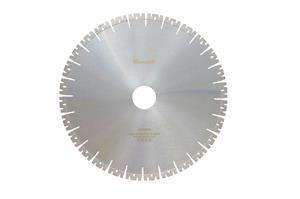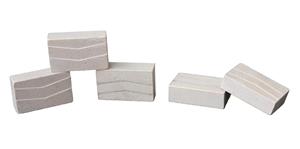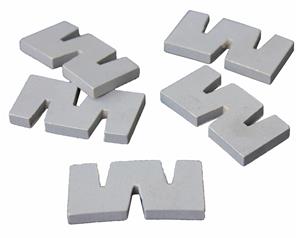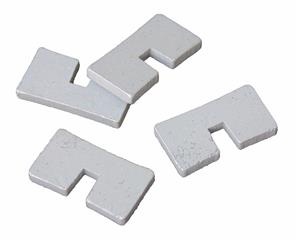How to check if the diamond cutting head welding is firm
The firmness testing of diamond blade welding is mainly divided into two methods: manual and mechanical.
1、 Manual testing method
Observation of appearance: Use visual inspection or magnifying glass to observe whether the bonding surface between the welded diamond cutting head and the substrate is completely fused, and whether there are obvious defects such as pores and lack of fusion. At the same time, observe whether the fixing method between the blade and the substrate is firm, such as using welding agents or bolts for fixing.
Knocking method: Use a hammer or other striking tool to strike the joint between the blade and the base, and determine whether the welding is firm through sound, vibration, etc. If the sound is dull or the vibration is loud, it indicates that the welding is not firm.
Tensile test: Conduct a tensile test at the joint between the blade and the substrate to check the firmness of the welding by applying a certain amount of tension. If there is no separation or detachment at the joint under tension, it indicates that the welding is firm.
Destructive testing: Using destructive testing methods such as impact testing, bending testing, etc., to check whether the joint between the blade and the substrate can withstand the specified load without separation, detachment, or other phenomena.
2、 Mechanical testing methods
Ultrasonic testing: Use ultrasonic testing instruments to inspect the welded diamond cutting edge, and determine whether there are welding defects such as pores, lack of fusion, etc. based on the reflected ultrasonic signals.
X-ray inspection: Use X-ray inspection instruments to inspect the welded diamond cutting edge, and determine whether there are welding defects such as pores, lack of fusion, etc. based on the penetration ability of X-rays.
Pressure resistance test: Under a certain pressure, the welded diamond cutting edge is tested to observe whether there is leakage, deformation, or other phenomena at the joint between the cutting edge and the substrate, in order to determine the firmness of the welding.
Fatigue testing: By testing the welded diamond cutting edge under a certain cyclic load, observe whether there are fatigue cracks or detachment at the joint between the cutting edge and the substrate to determine the firmness of the welding.
High temperature testing: Place the welded diamond cutting head in a high temperature environment for testing, observe whether there is melting, detachment, or other phenomena at the joint between the cutting head and the substrate, in order to determine the firmness of the welding.
Low temperature testing: Place the welded diamond cutting head in a low temperature environment for testing, observe whether there is cold shrinkage, detachment, or other phenomena at the joint between the cutting head and the substrate, in order to determine the firmness of the welding.
In short, regardless of the testing method used, it should be conducted after welding is completed and cooled. At the same time, in order to ensure the accuracy of test results, testers should possess corresponding skills and experience, and operate according to corresponding standards and specifications.




